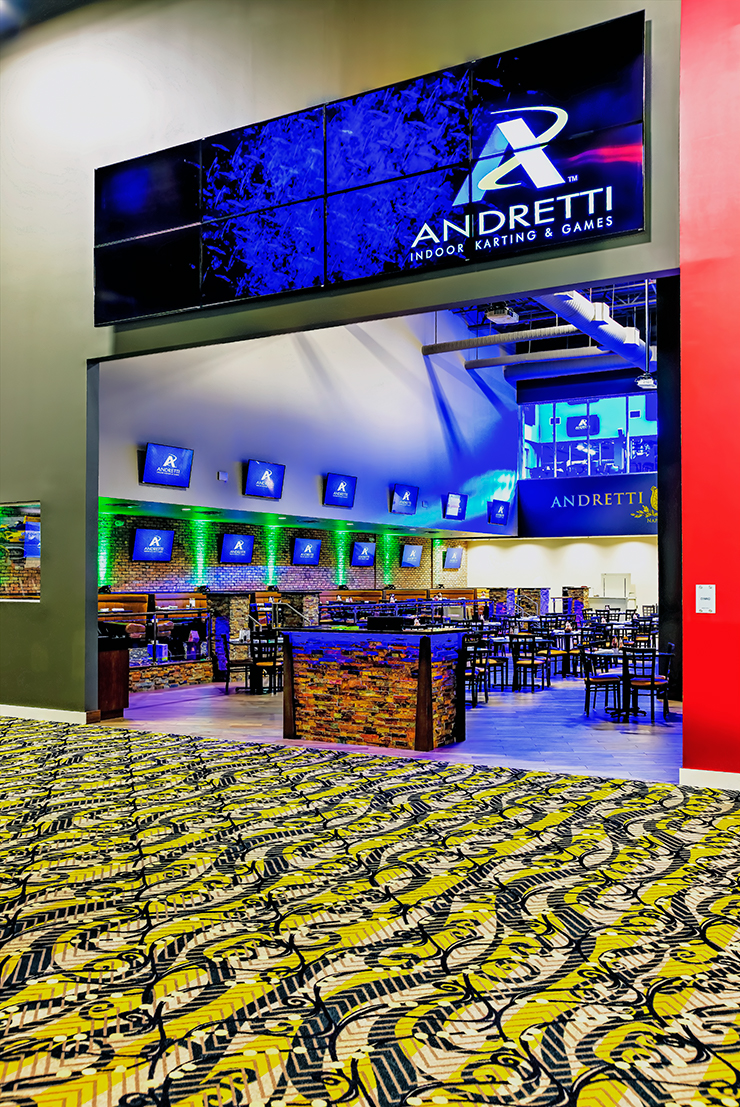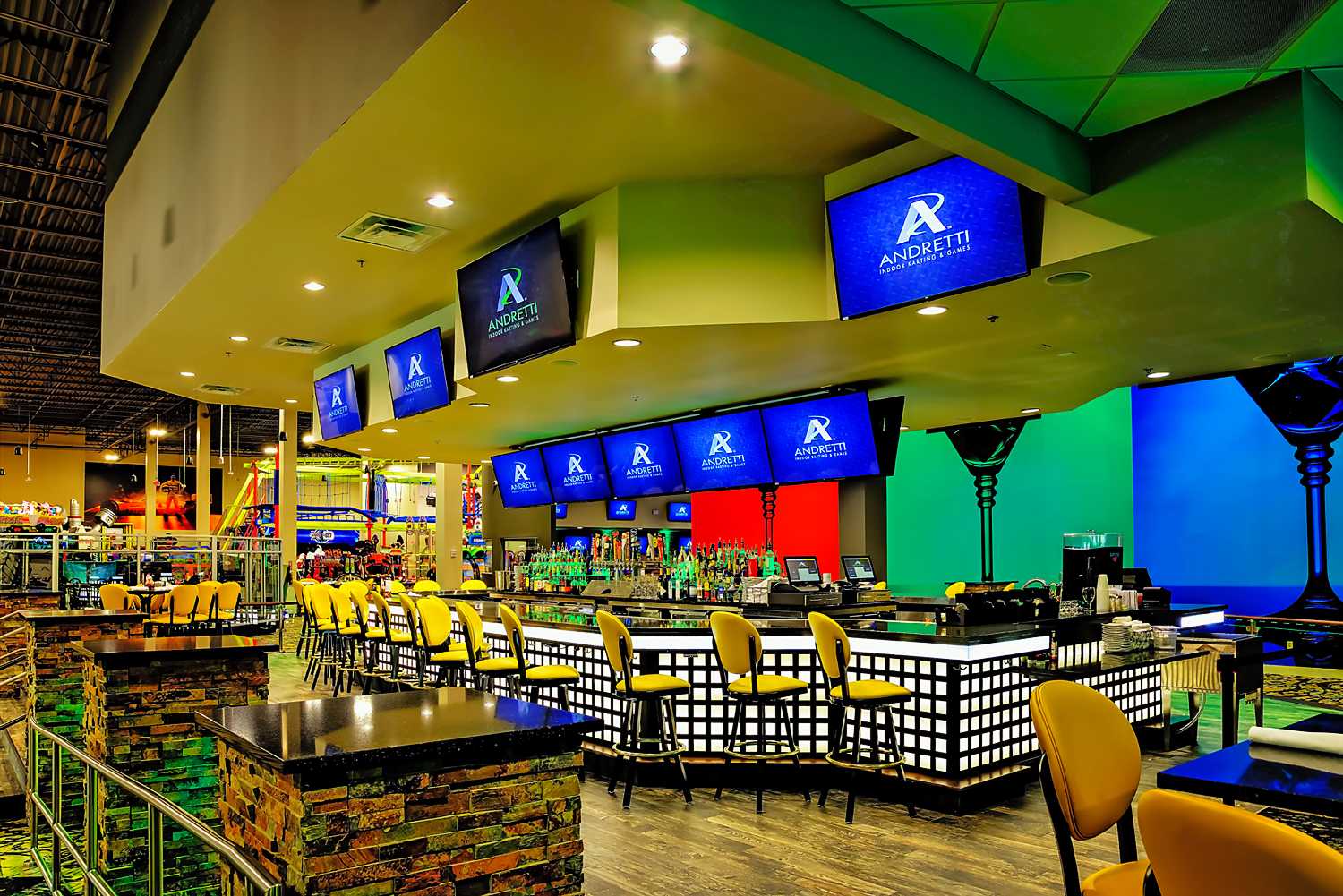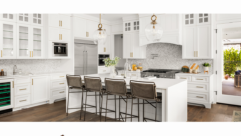On this edition of the SVC Podcast, Contributing Editor Bennett Liles concludes his conversation with Mike Fraioli, Vice President of AV Sales at BCI Integrated Solutions about their AV, security and data network design and installation for Andretti Indoor Karting and Games in Orlando. Mike discusses their power plan for the video displays. He also provides details on video projection, sound environment isolation and the massive 50-camera security system that BCI Integrated Solutions provided.
Links of Interest:
· Andretti Indoor Karting and Games in Orlando
· BCI Integrated Solutions with offices in Tampa, Orlando and Ft. Meyers, Florida
· Contemporary Research ICC1-232 TV Controller
· Crestron CP3 3-Series Control System
· Contemporary Research ICC2-ATSC+ Tuner Controller
This is the SVC Podcast from Sound & Video Contractor with Mike Fraioli of BCI Integrated Solutions. For show notes and product links on all of the podcasts go to svconline.com and click Podcasts at the top of the page.
Andretti Indoor Karting and Games in Orlando had to get more than a dozen DirectTV video sources to over 100 displays. BCI Integrated Solutions came in to get it all done. Mike Fraioli is back this week to give us the details on sound isolation, security and keeping glare off the video displays. Coming up on the SVC Podcast.
Mike, it’s good to have you back this week for the SVC Podcast from BCI Integrated Solutions in Tampa. We’ve been talking about the 150,000 square foot Andretti Indoor Karting and Games in Orlando, with karts on tracks, rope lines, bowling and tons of arcade games. There are over a hundred video displays in there and they all have to run on power so how did it go in getting power to displays, controllers and headend hardware?
There was an electrical engineer involved in the project, so he was certainly working with us to help get that situated. When you’re dealing with an audio-visual system you always want the power to be tied back to the same phase of the panels, so we just needed to make sure that the electrical engineer was aware of that as a requirement for the audio-visual systems. That’s just to minimize buzz and hum in the systems that you might typically receive otherwise. [Timestamp: 1:34]
I think you were using LG and Vizio displays and putting those on Atdec Telehook mounts.
Yes. LG was the main display for the entire facility. The owner decided to provide the Vizio displays for their video wall. They had it in another facility and they seemed to be happy with it. [Timestamp: 1:51]
That’s always good if they’ve already seen it in successful operation before and it’s well tested especially when you’re going to install it on a project of this scale. Going with untested gear on the project this big could really get expensive.
It could.

With this many sound sources, how did you manage to control sound environment isolation? You’ve got a hundred and eight pendant speakers around the place and sound isolation would be especially important for the quieter areas like meeting spaces.
Yeah. A lot of the open area spaces like the arcade use the pendant speakers and then in some of the smaller environments we use ceiling speakers. So we have meeting spaces and party spaces in here as well too, so those all made use of ceiling speakers. But it just depended on what area we were dealing with and how we had to balance that sound. Like in the arcade areas, that was really used more as just background music so we did not want to deter from the sounds that the games were actually making. The guests there really do envelope themselves in the games themselves and background music is supposed to be just that – in the background. But then you move into other spaces like the restaurant and that’s more of a foreground system at that point. You want to be there for that Monday night football game and we wanted the sound to be more interactive with the guests that are there to specifically watch the video that was going on. [Timestamp: 3:05]
Yes, the football and sports fans sure don’t want anything getting in the way of hearing the game. Tell me about the video projection in the party areas. I think they’re rooms that you can divide. How did you get the video from the sources to the projectors?
Yeah, so a lot of the stuff was done locally. So to the party spaces, the larger room had room-combining capability. So you would have a podium that was up at the front for main presentations and the audio-visual equipment lived within that podium. Then you would be able to plug in locally into a wall plate in each of these two larger party rooms and that would then come into a Crestron DMPS switcher for us to be able to then combine and uncombine the spaces as necessary. [Timestamp: 3:49]
Ok. I know that you’ve got a lot of different light levels in this place especially in the dining area. It looks like it’s completely open to the sky as far as the ambient light and keeping that glare off of the dozens of displays in there may have been kind of a tricky task.
It was. In the restaurant in particular it was about two stories tall. In the SKY Bar was kind of on that third story. They’re very tall ceilings, so the SKY Bar actually had a bunch of glass that opened and bled into the restaurant down below so it makes it seem like a lot of natural light is coming in because it kind of is. It’s coming in from the SKY Bar, natural light overhead through that atrium, and then through the glass walls and into the restaurant. So yes, so the position and angle of the screens had to be considered when we had that much natural light coming in. [Timestamp: 4:42]
Yeah, that’s hard to call with so many people in one big room and which display they’re going to be looking at from what angle. But I know you didn’t do just the AV system. You handled installation of the data network and security system as well.
Yes we did.
And on the security system that was something like fifty Honeywell cameras?
That’s right, yeah. There’s 50 cameras spread throughout the facility to cover all the different angles that we wanted so it’s more of a overview site from the guest perspective for guest safety, and then we also had cameras that were positioned specifically over point of sale cash registers so that way they could watch the drawers. [Timestamp: 5:16]
And of course those are not on coax. Those are twisted pair?
Yes. Those were IP-based cameras.

I wouldn’t think that there’s any way the data and security networks could interfere with each other since they’re cabled completely separately.
They are cabled completely separately but they’re also on two completely separate networks. So they did do some VLANs and separate those networks with their switches.
And the party areas where you can divide the rooms and you’ve got projection in those. How did you set up the screens in those so that they don’t have trouble with varying ambient light levels?
The party rooms were a little easier, actually, because all of that was drop-tile ceiling so it was much more of a conditioned space for us to work within. So it was your traditional drop tile with fluorescent lights. So the smaller meeting rooms all had TV’s in it and the two larger party rooms had projection. [Timestamp: 6:05]
This is such a broad scoped project that once all of the systems were installed, just getting it all rung out and tested must have been a mighty big job in itself.
It was. We had about probably a week’s worth of punch out just to start trimming out our systems, but then we had another week or so of just going through and testing equalizing. We obviously had to wait until the space was completely finished for us to be able to start doing our EQ as we needed all construction crews to be cleaned up. [Timestamp: 6:34]
But it must be a totally different environment in system testing with an empty building and then later when it’s full of noisy crowds, music and game sounds. So you came back in after all that’s going on to make some real world adjustments.
Oh absolutely, yeah. I mean, the spaces would need to be quiet for us to get our baseline equalization, but we also need it to be full in terms of all of the games. So we needed all the games to be loaded in there, all the simulations, all of the carpet. I mean, it had to be a finished space for us to get that EQ. And then once the space actually fills with people we’re able to balance it a little bit and give the owner that control with their Crestron iPad integration that we provide to them. [Timestamp: 7:15]
That must have been pretty cool coming back in there after all that work and just see everybody having a great time with it.
Yeah, it was a great grand opening. They had Mario Andretti there for the main opening and they brought in one of the F1 cars to show people so it was a good time. [Timestamp: 7:29]
How do those VR simulator cars work? I know they’re a main attraction.
It certainly is. Andretti would probably have to tie back into exactly how those things work since they provided them, but it’s pretty cool. You get to walk up to these things and sit in a chair that is mimicked after an F1 car. And you get a full steering wheel and all of the paddles that you would see in a normal F1 vehicle. And then you have these wrap around screens that went around you to simulate you in a driving experience. And then the chair had pistons and actuators to be able to move you around. So it was supposed to be the most accurate F1 simulation representation that’s currently on the market. [Timestamp: 8:09]
I’m sure it’s outrageous sitting in one of those with all of that input coming at you and that was the cover story on the Sound & Video Contractor July issue. So you got it all in and tested and got to see the crowds using it. The question now is, what do you do for a follow-up? What sorts of projects has BCI Integrated Solutions got in the works now?
We’ve got several projects coming up. We’ve got one big one coming up for a resort out in Orlando. That resort has got over a million square feet of just meeting spaces, and so we’re going to be doing all of the audio-visual updates for it. So it’s going to be new touch panels, control, audio distribution, new amplification, and that one is going to be a fairly substantial project for us. We’re supposed to be lined up to finish that by the end of this year. [Timestamp: 8:53]
That shouldn’t be very tough after you’ve handled something on this kind of scale. You could spend a whole week in there just trying to get to everything.
Oh, absolutely. There’s a lot to do in that space between bowling and laser tag and the ropes course, the arcade games, the simulations, the actual karts, restaurant – I mean, there’s certainly a lot to do. [Timestamp: 9:10]
That’s for sure. Andretti Indoor Karting and Games in Orlando and BCI Integrated Solutions got the security, data network and AV systems setup and tested. We’ve been talking with Michael Fraioli, BCI’s Vice President of AV Sales giving us look behind the scenes at how all of this was done. Thanks for being here.
Thanks, Bennett. I appreciate it.
BCI Integrated Solutions did an impressive job in outfitting AV systems at Andretti Indoor Karting and Games in Orlando. Now the party is underway there and data, security and the AV systems are making it all happen. Get back with us next week for the inside story on another AV project right here on the SVC Podcast.










